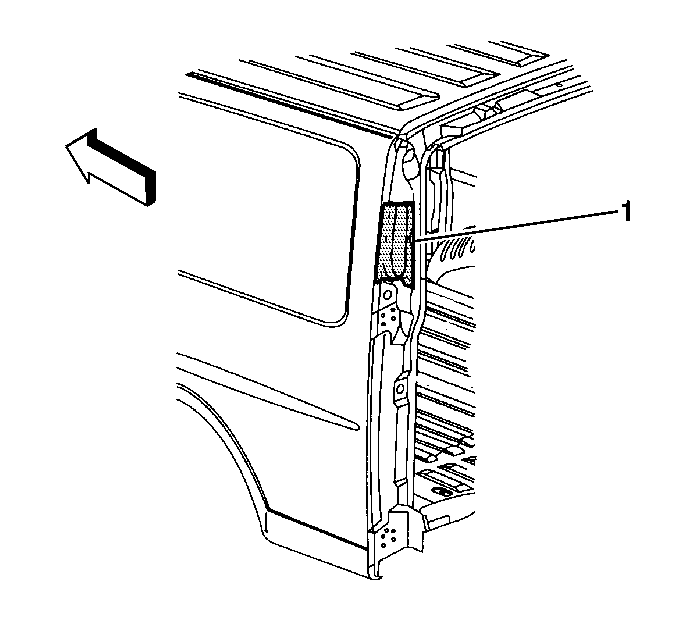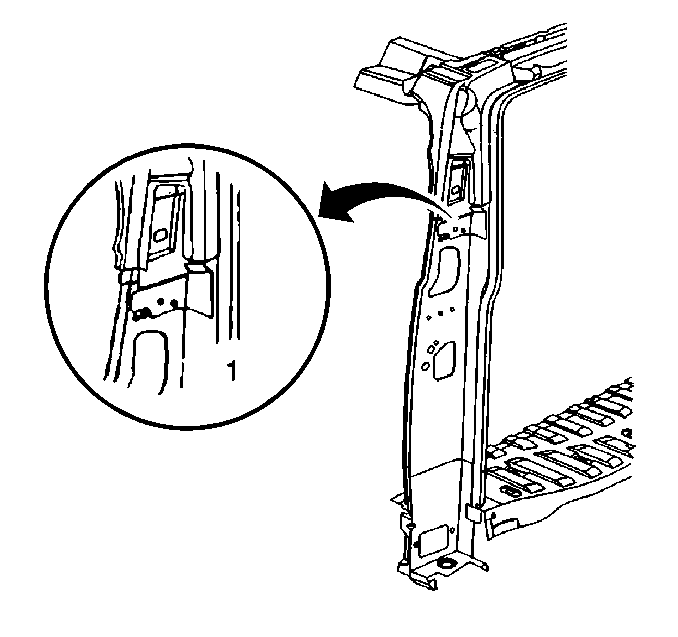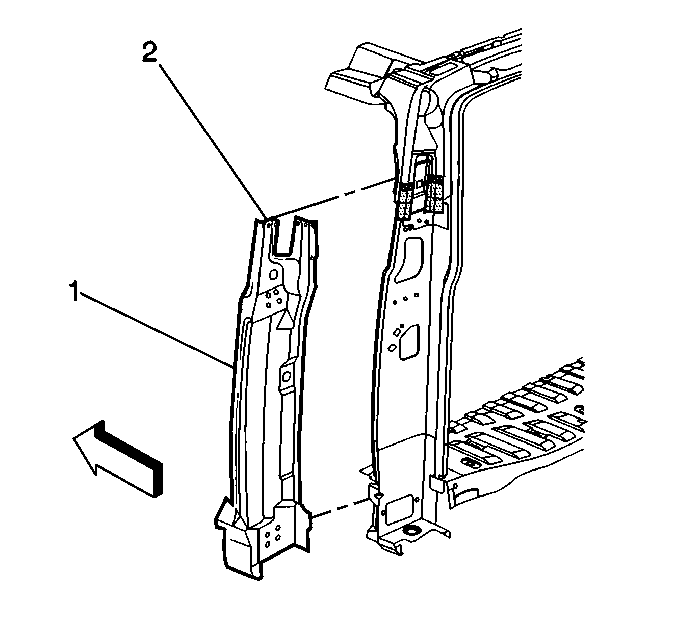For 1990-2009 cars only
Removal Procedure

Important: The rear door hinge pillar service part is serviced as an assembly, which consists of the door hinge pillar outer panel (1) and the inner anchor plate reinforcement (2). The reinforcement includes weld nuts for attaching the rear door bolt-on hinges.
- Remove all related trim panels and components.
- Visually inspect and restore as much of the damage as possible to factory specifications.
- Remove the following as necessary:
- Section the rear door hinge pillar in the area of the pressure relief valve opening (1).
- Measure within the shaded area (1) on the rear pillar.
- Mark and cut the original panel (1). Use care not to damage inner panels.
- Locate, mark, and drill out all factory spot welds around the perimeter of the rear door hinge pillar below the sectioning joint.
- Remove the damaged rear hinge pillar.
| • | Sealers |
| • | Sound deadeners |
| • | Anti-corrosion materials |


Installation Procedure
- Cut a 100 mm (4 in) backing plate from the unused portion of the service part (1).
- Trim the backing plate as necessary to fit behind the sectioning joint (1).
- Drill 8 mm (5/16 in) plug weld holes in the original part 25 mm (1 in) from the cut edge (2).
- Fit the backing plate halfway into the sectioning joint (1).
- Clamp and plug weld to the vehicle.
- Fit and align service hinge pillar (3) with adjacent body panels. The sectioning joint should be trimmed to allow a gap of one and one-half times the metal thickness at the joint between the service part and the original part. Take care to ensure proper alignment of service panels.
- Drill 8 mm (5/16 in) plug weld holes in the service hinge pillar as necessary in locations noted from the original panel.
- Prepare all attachment surfaces as necessary.
- Align the service part to the vehicle.
- Use three dimensional measuring equipment to check fit.
- Plug weld accordingly.
- Complete sectioning by welding the joint gap closed with 25 mm (1 in) gaps alternately.
- Go back and complete the stitch weld. This will create a solid joint with minimal heat distortion
- Clean and prepare the welded surfaces.
- Prime with two-part catalyzed primer.
- Apply the following as necessary:

| 16.1. | Fillers. |
| 16.2. | Sealers. |
| 16.3. | Anti-corrosion materials. |
| Important: Do not combine paint systems. Refer to paint manufacturers recommendations. |
| 16.4. | Install all related panels and components. |
